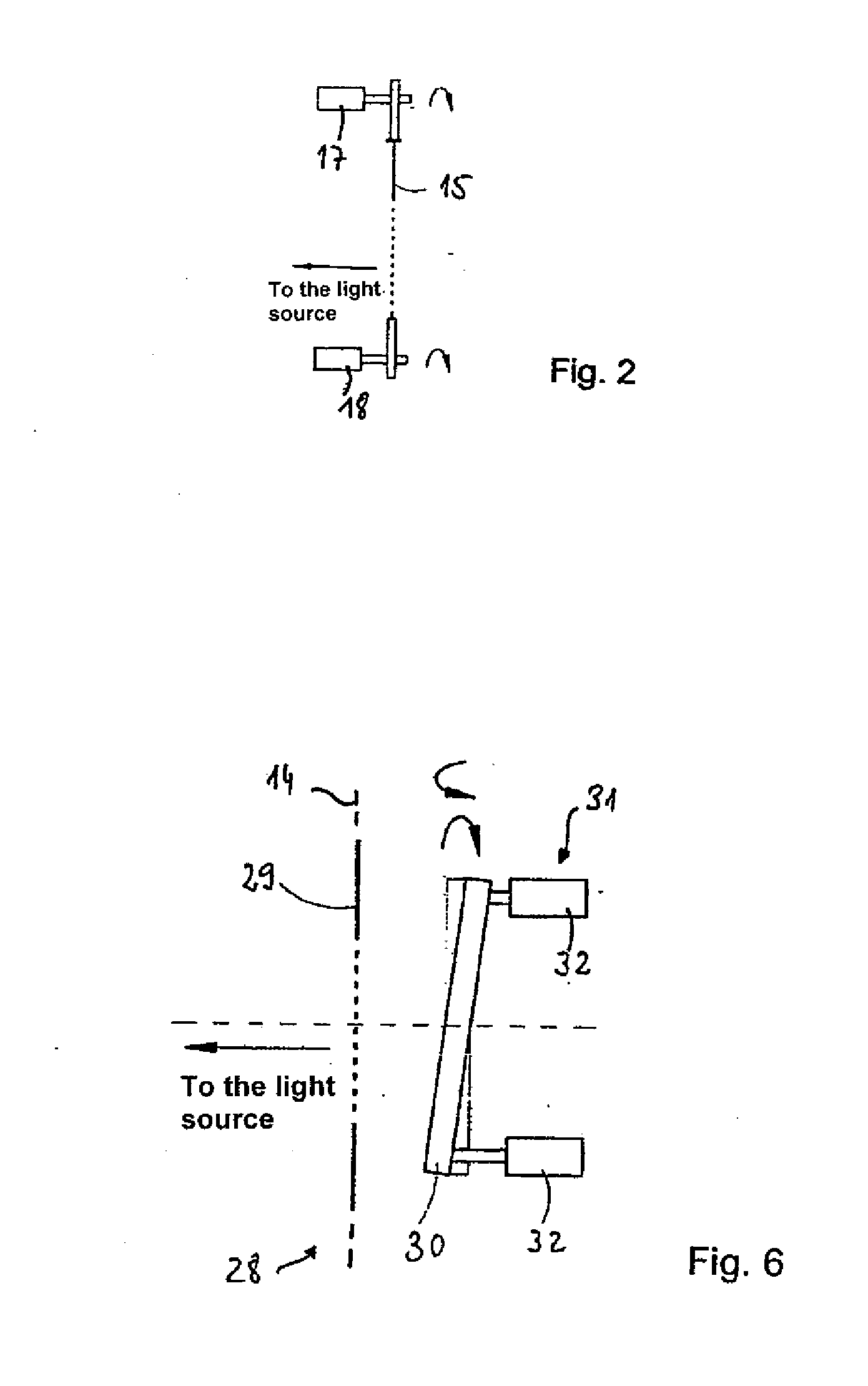Method and device for producing an image of a thin layer of an object
a thin layer and object technology, applied in the field of producing an image of an object, can solve the problems of high adjustment requirements, significant limitations regarding the choice of wave length, and affecting the mapping of objects by artificial light, and achieve the effect of high quantitative precision of fluorescence measurements and sufficient in-depth selection
- Summary
- Abstract
- Description
- Claims
- Application Information
AI Technical Summary
Benefits of technology
Problems solved by technology
Method used
Image
Examples
first embodiment
[0078]A device, shown greatly simplified and schematically in FIG. 1, for producing an image of a layer of an object, according to the invention, includes an illumination installation 1, an subsequent installation 2 for producing illuminating patterns in an object plane 3 of an object 4, arranged on a slide or stage, an imaging optical element 5 for mapping object 4 on an image plane B, as well as a resolving detector 6, arranged in the image plane. An evaluation installation 7 is connected to the detector 6 by means of a detector connection, and with installation 2 by means of a control line.
[0079]Illumination installation 1 contains a light or radiation source 8 with a subsequently arranged filter 9, a shutter 10 and, optionally, optical elements 11, which homogenize the optical path, and which, for example, can be a light transmission bar or a hollow rod with internal reflection; and furthermore, first illuminating optical elements 12 and 13 for homogenous illumination of an area...
second embodiment
[0133]The other steps are the same as in the first and
[0134]In a fifth embodiment of the method and the device, according to the invention, not the field stop 15 but the object 4 is moved. Thereto, a stage can be used, on which the object is arranged, and which is movable in directions parallel to the object plane 3 by means of a drive, controlled by the evaluation installation 7. The images are processed analogously to the first embodiment. For the positioning of the object 4 in the object plane 3, piezoactors, eccentric drives or other suitable adjustment mechanisms can be used, but preferably a motorized microscope stage. The second through the fourth embodiments can be modified accordingly.
[0135]A device, according to a sixth preferred embodiment of the invention, differs from the device of the first embodiment in such a way that a modified installation 28, shown in principle in FIG. 6, for producing illuminating patterns and an accordingly modified evaluation installation are u...
PUM
 Login to View More
Login to View More Abstract
Description
Claims
Application Information
 Login to View More
Login to View More - R&D
- Intellectual Property
- Life Sciences
- Materials
- Tech Scout
- Unparalleled Data Quality
- Higher Quality Content
- 60% Fewer Hallucinations
Browse by: Latest US Patents, China's latest patents, Technical Efficacy Thesaurus, Application Domain, Technology Topic, Popular Technical Reports.
© 2025 PatSnap. All rights reserved.Legal|Privacy policy|Modern Slavery Act Transparency Statement|Sitemap|About US| Contact US: help@patsnap.com



